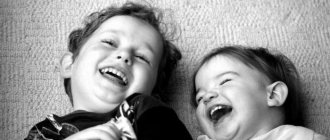Introduction
People can exchange different types of information at different levels of understanding. It is known that communication is not limited to oral or written messages. In this process, emotions, manners of partners, and gestures play an important role.
Psychologists have found that in the process of interaction between people, from 60 to 80% of communications are carried out through non-verbal means of expression and only 20-40% of information is transmitted using verbal
These data make us think about the importance of non-verbal communication for the mutual understanding of people, pay special attention to the meaning of human gestures and facial expressions, and also generate a desire to master the art of interpreting this special language that we all speak without even realizing it.
The peculiarity of non-verbal language is that its manifestation is determined by the impulses of our subconscious, and the absence of the ability to fake these impulses allows us to trust this language more than the usual verbal channel of communication.
The success of any business contact largely depends on the ability to establish trusting contact with the interlocutor, and such contact depends not so much on what you say, but on how you carry yourself. That is why special attention should be paid to the manner, posture and facial expressions of the interlocutor, as well as to the way he gestures.
Understanding the language of facial expressions and gestures allows you to more accurately determine the position of your interlocutor. By reading gestures, you provide feedback, which plays a decisive role in the overall process of business interaction, and the set of gestures is an important component of such communication. You will be able to understand how what you say is received - with approval or hostility, the interlocutor is open or closed, busy with self-control or bored.
Knowledge of body language and body movements allows you not only to better understand your interlocutor, but also (more importantly) to foresee what impression what you heard made on him even before he speaks out on this matter.
In other words, such wordless language can alert you to whether you should change your behavior or do something different to achieve the desired result. All this allows us to conclude that if you want to achieve certain results in relationships with partners, interlocutors or simply colleagues, then you need to master at least the basics of non-verbal, i.e. wordless communication.
advertising is not displayed
The purpose of this work is to consider the essence and main characteristics of nonverbal communications.
In accordance with the goal, the objectives of this work are:
- analysis of kinesic features of nonverbal communication;
- disclosure of proxemic features of nonverbal communication;
- study of visual contact in nonverbal communication;
- consideration of cross-national differences in nonverbal communication.
How does an honest person behave?
- Calmly maintains eye contact, is open to communication, leans towards the interlocutor during a conversation. Keeps himself calm and confident. Can nod and carry on a calm conversation. Likes to gesticulate, arms open, palms down, saying “everything is fair.” The legs are in a calm state, standing side by side or thrown one behind the other, but without sudden movements. Turns his whole body and feet towards the interlocutor.
- The facial expressions are lively , a light and lively smile is visible on the face, always sincere, you can feel it, the fun is transmitted to others. The smile is transmitted to the corners of the eyes, which also “laugh.” The facial expression always corresponds to the emotions and words experienced; if a person is sad or upset about something, it’s immediately obvious; he doesn’t pretend that everything is fine.
- Speech can express different feelings and emotions, which is reflected in the voice. The tone of voice corresponds to the mood, situation, feelings. The voice changes depending on the topic of discussion, tries to pronounce words clearly, the voice is deep, low, sonorous, we often hear optimism and cheerfulness.
The psychology of human behavior, facial expressions and gestures help to learn to understand people, their state, mood, to find a special approach to everyone, to distinguish sincerity from the desire to please or deceive. Gestures and facial expressions provide a lot of information, but the voice is also a reflection of a person, allowing you to learn more about the inner world and state at a particular moment in time.
How to recognize gestures?
In order to feel confident and comfortable in a situation of communicating with different people, to avoid manipulation, you should learn to recognize non-verbal language of communication in situations where they are trying to deceive you.
What means of nonverbal communication, gestures, postures, and facial expressions should you pay attention to in order to recognize a lie?
- excessively long or frequent pauses, pauses and hesitations before starting a line;
- asymmetry of facial expressions, lack of synchrony in the work of facial muscles, when there is a discrepancy in the facial expressions of the two sides of the face;
- a “frozen” facial expression, when it does not change for 5-10 seconds, is false;
- delayed expression of emotions, when long pauses arise between the word and the emotions associated with it;
- a “long” smile, where the lips are pulled back from the teeth, creating a narrow lip line;
- visual contact is shallow, when the liar's eyes meet the interlocutor's eyes for no more than a third of the entire conversation, while often looking at the ceiling and around with a restless expression on his face;
- twitching of any part of the body: tapping fingers on the table, biting the lip, twitching of arms or legs;
- scanty gestures that the liar keeps under control;
- high pitched voice, heavy breathing;
- bent body, crossed-legged poses;
- poor facial expressions, weak work of the facial muscles;
- quickly moving the eyes first to the upper right corner, and then to the lower left;
- quick, imperceptible at first glance, touching the nose, rubbing the eyelid;
- brighter gestures with the right hand compared to the left;
- any exaggeration: unnecessary movements and gestures, inappropriate emotions;
- frequent eye blinking
Knowing all the subtleties of non-verbal communication techniques, you will not only be able to avoid manipulation, but you yourself can easily learn how to manage people
The main thing that any student of body language strives for is the ability to detect lies in the speech of the interlocutor. They say about dishonesty:
- Frequently touching the face, scratching the forehead and nose, covering the mouth with the hand. A person literally tries to stop himself from telling a lie, to cover his face, avoiding a direct condemning gaze.
- Stroking, scratching the neck. Talks about lies caused by fear or misunderstanding. Such gestures are often demonstrated by subordinates when talking with their boss.
- Touching the earlobe. During communication, touching the ears means that the person does not believe in the information he heard, but tries not to show it.
- Quick, frequent smiles, licking lips. It means excitement, a desire to hide deception.
To get a complete picture of the correspondence of gestures and facial expressions to a person’s words, you need to evaluate the meaning of all movements:
- Gait. By the way the interlocutor enters the room, you can assess the degree of confidence and self-esteem: a long step, a confident gait - purposefulness and ambition, a shuffling gait - lack of will and aspirations, a slow, imposing gait - narcissism and demonstrativeness.
- Hand position while moving and sitting. Elbows pressed to the body indicate isolation, unsociability; broad gestures, waving your arms when talking - openness, sociability. Touching your interlocutor is a desire to enter the zone of closest trust, a desire to subjugate.
- Direction of view. The position of the eyes shows how interested the interlocutor is in the conversation and the desire to defend his point of view. A downward gaze means the person is telling the truth; an upward gaze means he makes it up as he goes along.
- Posture. A straightened neck and a raised chin indicate a person’s general confidence; a bowed head is a sign of humility and timidity.
- Body direction. A body leaning forward means interest in the conversation, sympathy for the interlocutor, a desire to reduce the emotional distance, and gain trust.
If a person often changes position during a conversation, his opinion is unstable. He is ready to accept someone else's point of view and submit to his interlocutor.
Sight
Gaze and eye contact with the interlocutor play a huge role in communication. With just your eyes you can express contempt or respect, interest in a conversation or boredom, confidence or shyness. Even the pupils can provide information about a person at a given moment. Dilated pupils often mean emotional excitement and a positive mood, while constricted pupils indicate uncertainty or a bad mood.
The frequency and duration of eye contact also matters. A self-confident person can communicate without almost taking his eyes off the interlocutor. Also, long-term eye contact is established between well-known and close people with whom you can be frank. Jerky glances, lowering the eyes to the floor or constantly looking them to the side can indicate a person’s lack of confidence in himself or in the information he is giving out. Lies, lack of emotional contact with the interlocutor and reluctance to talk are also manifested in a similar way.
Superwoman pose
And if you are nervous before a serious conversation or meeting, then try to calm yourself down with the help of the “super-woman” pose - sit straight, at the full depth of the chair, hands on your knees, back straight, shoulders relaxed and apart, chin high, gaze straight ahead. .
Take 15-20 deep breaths, imagining how stress is released from the body as you exhale, and feeling the stability of your posture. This exercise helps bring your parasympathetic nervous system back to normal (heart rate slows, breathing becomes more regular, sweating decreases, and you generally feel more in control).
Ready? Great, go into the meeting feeling confident and in the right position. And don't forget that your tongue may lie, but your body will still tell the truth.
Scientific research
Representatives of Ancient Rome already possessed the study of body language and the desire to characterize gestures. The science formed on the basis of the observations of researchers was called kenesics. The greatest contribution to its development was made by:
- J. Balwer. He created a fundamental work devoted to gestures, in particular, hand movements.
- I. F. Lavater. He studied physiognomy and conducted a comparative analysis of emotions and gestures.
- G. K. Lichtenberg. He published several works in which he examined Lavater’s ideas in detail, calling them superficial and far from reality.
- C. Bell. He studied the nervous system, studied the correspondence of facial features to the emotions experienced. He deduced a pattern between emotional reaction and muscular activity.
- C. Darwin. Studied the correspondence of facial expression to emotional reaction.
- F. Bacon. I came to the conclusion that there is a special body language that is understood by all peoples of the world.
- F. Lowen. In his book on the psychology of the body, he outlined the basics of psychosomatic problems
Psychologists and sociologists believe that body language can become a universal means of communication between people of different social groups.
Expressions of feelings and emotions through nonverbal signals
Gestures, facial expressions, pantomimes (as means of communication) are optical-kinetic types of information exchange. In them, distance, body movements, intonation and appearance matter. According to psychological research, women express their feelings more accurately and are better at understanding the feelings of others.
People employed in communication-related professions such as teaching, psychology, and acting have similar accurate perceptions.
Among the common characteristics of various human emotions and feelings, the following combinations of nonverbal signs can be distinguished:
- A dreaming person raises the inner ends of his eyebrows high and looks up. The corners of his mouth may be located asymmetrically.
- Embarrassment can be identified by downcast eyes and a closed smile with one side of the mouth and the inner ends of the eyebrows raised.
- Strong hidden tension is expressed in tightly clasped fingers and clenched hands. The level of tension is proportional to the force of squeezing the fingers and hands. Other symptoms include nervous rubbing of fingers and hands together, high hand mobility, handling paper clips, and rotating writing objects. A person experiencing mental stress may look towards the window or door, unconsciously expressing a desire to leave the room, suddenly get up and walk around the room.
- Signs similar to indicators of tension are shown by people in an aggressive state, but indicators of aggression have their own specifics. Gestures become more expressive, a person can point with a finger, slam doors and clench his fists.
- Irritability, nervousness and uncertainty are manifested by frequent yawning, coughing similar to clearing the throat, fidgeting in the chair, frequently looking away from the interlocutor, shaking keys or coins in the pocket.
- A person having insidious thoughts looks with squinting eyes. The outer ends of his eyebrows are raised, and his lips are tightly compressed and form a semblance of a smile.
- The desire for contact and interaction can be indicated by sitting on the front edge of the seat, leaning the torso forward, an unbuttoned jacket, friendly intonations and gestures next to the speaker’s face. If the person is open, his arms are slightly extended forward, to the sides and perform circular movements, and his palms are visible.
- Stealth or a desire to hide something can be indicated by mechanically closing the mouth with one or two hands, rubbing the chin or temples with fingers, averting the eyes and tilting the body away from the interlocutor.
- In addition to the described signs of confidence, it can be characterized by leisurely walking back and forth and folding the arms in front of oneself in a dome in a sitting position, when the fingers are joined on top and the palms remain at a distance. This gesture can also be interpreted as an intention to conduct a dialogue, but from a position of dominance. The greater the confidence of the person folding his hands in this way, the higher this “dome” is located.
- Determination is manifested in tightly clenched jaws, a frowning glance and a sharp constriction of the pupils.
- Closedness and the desire to distance oneself is characterized by the castle pose. It consists of arms crossed on the chest with clenched fists and legs thrown one on top of the other. The need for distance can be manifested by tilting the torso back from the interlocutor when sitting.
- Pursed lips, averted gaze, and low-lowered eyelids and eyebrows can indicate resentment.
- Self-control may be expressed differently in men and women. Seated men grip the armrests if available, their ankles are crossed and their legs are slightly extended forward. When speaking from the podium, self-control and confidence are demonstrated by having your hands pointing forward and firmly holding the sides of the podium. The most common expression of self-control in women is to place their thumb behind a belt or skirt.
- A person with cunning thoughts averts his eyes to the side, lifting one of the corners of his mouth.
Thanks to gestures, facial expressions and intonations, you can significantly diversify communication and give your words an appropriate emotional coloring, making them easier to understand by your interlocutor.
Nonverbal means of communication can change the meaning and strength of the effect of speech, due to which they are of increased interest among politicians, media workers, businessmen and careerists. Pantomime and other means of assessing a person’s state, intentions and influence on him are in demand in psychology and the work of law enforcement agencies.
Some interpretations of various nonverbal indicators may be either coincidence or the result of factors irrelevant to the situation. Judicious use of non-verbal information exchange means can serve to entertain and enrich human relationships.
Nonverbal communication
Definition 2
Nonverbal communication is a system of signs and symbols that is used to convey a message and intended for its most perfect awareness, which to a certain extent does not depend on the psychological and socio-psychological properties of the individual, which has a fairly clear range of meanings and can be presented as a specific sign system.
People need non-verbal means of communication to clearly understand each other. Naturally, nonverbal manifestations relate only to oral communication. Since the external nonverbal expression of feelings and emotions performed by the body is also represented by a certain set of signs and symbols, it is often called “body language.”
Too lazy to read?
Ask a question to the experts and get an answer within 15 minutes!
Ask a Question
Nonverbal communication consists of two large groups: extralinguistic and paralinguistic means of communication.
Paralinguistic group:
- Prosody. This group is supposed to include components that complement speech. These are the timbre, strength and depth of the voice, the amount of expressiveness of articulation, stress, length and nature of pauses, etc. In other words, means of the prosodic level make it possible to impart a nuance to information by influencing the voice.
- Kinesics is a complex of body movements (gestures, facial expressions) that are used during human communication (excluding movements of the speech apparatus).
- Graphemics is a way of writing that conveys a person’s emotions and feelings. The manner of writing words and letters may change depending on the emotional background. So, say, an angry person presses his pen hard on the paper, but a thoughtful person may make mistakes and forget to complete the “hooks.”
Note 1
Paralinguistic means of communication cannot be used without reference to speech.
Extralinguistic group:
- Takeshiki is a non-verbal means of communication that is based on tangible signals transmitted by people to each other. These include kissing, hugging, patting, stroking, shaking hands and other communicative actions.
- Proxemics. Interlocutors in the process of interaction can be located at a distance or close to each other, deliberately or subconsciously exercising distance control. The method of organizing contact in space, which reflects the relationship of the interlocutors to each other, is called proxemics.
- Chronemics. Distribution of time during communication. A person may be in a hurry to get to a meeting, or he may put off the call. He can wait a long time for the interlocutor to become free, or he can reduce the contact time.
- Extralinguistics. Conveying emotions with the support of the voice, but without reference to speech. These means include dissatisfied rumbling, coughing, sighs, screams, etc.
- Sensory. Perception of the interlocutor using the senses. A person responds to the smell, the tenderness of the skin during touch and the visual perception of the interlocutor. There are also separate subgroups here. An example here would be olfactory means of communication (perception through smell) and phonation means of communication (hearing perception).
There is no need to learn non-verbal communication, as these are innate skills.
Nonverbal signals as a means of detecting lies
Nonverbal communication is a system of various signals of the human body, with the help of which the transmission of various emotions and feelings is enhanced. The ability to correctly interpret human gestures allows you to avoid lies and deception. Most often, when presenting facts untruthfully, a person hesitates before starting a sentence and inserts long pauses between words. Also, a lie is characterized by a “stony” facial expression and asynchrony in the work of facial muscles.
Due to the fact that a person cannot control his emotions, they rarely correspond to words and appear only after uttering false phrases. Deception can be detected by a “long” smile, in which the lip line folds into a narrow line. When a person tells a lie, his gestures convey some nervousness, and his posture becomes closed . An attempt to control one's own body leads to meager facial gestures and low body mobility. Frequent hand gestures, intermittent breathing, increased tone of voice, biting lips are the easiest ways to recognize lies in the words of your interlocutor.
Typically, nonverbal communication occurs with little awareness and rarely intentionally.
You can understand that a person is lying by analyzing his gaze. During a deceptive conversation, the interlocutor avoids prolonged visual contact and his eyes quickly move to the sides. Often, problems with making eye contact lead to the fact that the deceiver begins to unconsciously bring his hands to his own face, rubbing various parts of his head.
You can detect a lie in words thanks to inappropriate gestures and movements, as well as too sluggish expression of your own emotions. Knowledge of such subtleties of nonverbal communication allows you not only to avoid attempts at manipulation by others, but also to learn how to independently manage your interlocutors and direct the conversation in the necessary direction.
Nonverbal communication what is it in psychology
Nonverbal communication is a type of communication without the use of words (through images, intonation, gestures, facial expressions). The tools for influencing a person are:
- sight;
- interpersonal space;
- optical-kinesthetic signals (facial expressions, appearance of the interlocutor, pantomime);
- peri-speech factors – vocal range, vocal qualities, timbre;
- extra-speech (laughter, speech rate, pauses).
For your information. Nonverbal methods of communication improve mutual understanding between people, allow you to predict the mood and attitude of the interlocutor towards the individual, and predict your own communication model.
Features of nonverbal communication
Nonverbal communication is a situational reflection of people’s personal characteristics: mood, emotional background, attitude towards others and the topic. This communication is involuntary and spontaneous, it is difficult to divide it into individual elements (postures, facial expressions, olfactonics), this is the key feature of nonverbalism. Gestures, intonation, gaze are difficult to study or edit; it will take years and decades. But even trained people can be caught lying when one part of communication does not match another. Sign language is trusted more; it is perceived at the level of intuition.
Open posture in negotiations
Nonverbalism is an important element of communication, carrying 60-80% of information with the body, only 20-40% of communication is realized in words. It is worth closing your eyes and hiding your hands if you need to hide insincerity - this was the conclusion of one observant English court official.
The Origin of Nonverbal Communication
Nonverbal language has two types of origin: biological evolution and culture. Biologists have found that facial expressions when expressing emotions, most gestures and body movements in people are innate and serve as a signal for feedback. The biological nature of nonverbal communication is confirmed by elements not controlled subconsciously:
- paleness or redness;
- enlarged pupils;
- curvature of the lips;
- blinking.
Based on intentional and unintentional communication, there are 3 nonverbal means of communication:
- Behavioral factors. Caused by a physiological reaction: sweating from excitement, trembling in case of cold or fear.
- Unintentional means. Associated with people's habits (scratching temples, swinging legs, biting lips).
- Communication signals. Conveys brief information about an object, event, or state.
There are also universal signals known to everyone that are characteristic of a particular culture. Vivid examples are the style of behavior, dress code, and conventional signs of greeting and farewell.
Common “body signs”
Types of nonverbal communication
Gestures
Placebo effect - what is it in psychology
Nonverbal gestures include pronounced movements of the head, hands, fingers, accompanying statements and thoughts. If people need to pay attention to objects, they will need the help of pointing gestures. Emphasizing gestures reinforce statements. A demonstrative movement of the brush explains the state of affairs. Touching a partner helps to establish social contact or receive a sign of attention, weakening the significance of information. Gestures are performed in voluntary and involuntary forms.
Pose
Postures must follow the rules of etiquette. Open poses of a sitting girl in Europe and America have neutral meanings; in Japan they are considered immoral. The squatting position of adults in most countries has an indecent definition; in South America and Africa, many peoples rest in a similar form. Using a chair is assessed as aggression.
Poses of strength and weakness
Postures during a public address or business conversation should express openness: arms unclasped, legs uncrossed, back straight. If you lean forward a little, your posture will be perceived as interest in an understandable topic. Slouching communicates uncertainty, while wide-set legs and arms indicate dominance. Tapping with a hand or foot is a manifestation of boredom, lack of time, impatience. The interlocutor took a closed posture - this may mean that the person does not believe or does not perceive the information well. The legs are turned towards the exit, the person wants to leave. The head is tilted forward, the interlocutor listens carefully and analyzes.
Facial expressions
Facial expressions are commonly called expressive movements of the facial muscles in order to express certain feelings of an individual. The types of facial expressions correspond to the functions of the psyche: mental acts are expressed by the muscles around the eyes, the perioral muscles are associated with acts of will. Feelings are emphasized by the general muscles of the face, changing in conscious and involuntary forms.
Various forms of facial complexes are possible:
- Amymia is the absence of visible facial changes.
- Tension can be indicated by a tight closure of the mouth and a petrified state of the upper part of the face.
- Interest can be easily recognized by a slight raising or lowering of the eyebrows, a slight widening and narrowing of the eyelids. The field of view increases, the focusing of the eyes becomes sharper.
- A smile can refer to calming or distracting from aggressive behavior, and is used when greeting.
Facial expressions convey basic emotions (joy, sadness, anger, surprise, disgust), provided by innate neural programs, as well as false information.
Facial display of emotions
Distance
The norms of approach between two people are defined in science by four intervals:
- Intimate. A length of 0...45 cm is considered optimal for communication between close people.
- Personal. A gap of 45...120 cm is maintained when communicating with familiar people.
- Social. A distance of 120...400 cm is recommended for official negotiations and conversations with strangers.
- Public. At a distance of 400...750 cm, it is not considered rude to exchange a couple of phrases; this interval is observed when speaking in front of an audience.
According to the teachings of social science, the rules vary for people of different ages, gender, and social status. For example, children and old people stay closer to their interlocutor, compared to teenagers. Men occupy distant positions, unlike women. A calm person gets as close as possible, an unbalanced person stays further. People address interlocutors of higher status at a great distance. Nationality also plays a role. Asians interact over shorter periods than Europeans, city dwellers are closer to settlers in sparsely populated areas.
Intonation
Prosody (voice tone, timbre, sound intensity, pauses) regulates the flow of speech, complements or replaces statements, and expresses the emotional state. It is important to be able to hear the intonation structure of speech, evaluate the strength and tone of voice, speed of speech, expressing the feelings and thoughts of the interlocutor:
- excitement is manifested by a low tone of voice, fast, abrupt speech;
- enthusiasm is demonstrated by a loud voice and clear, confident speech;
- fatigue can be easily determined by a low tone of voice, weakening of intonation towards the end of a sentence;
- signs of arrogance can be slow speech, even monotonous intonation;
- uncertainty is felt by interlocutors who make mistakes in words, frequent pauses, and nervous coughing.
The voice contains a lot of information about the owner. Experienced voice specialists are able to study the age, place of residence, character and temperament of the owner. People who have the ability to dramatically change the pitch of their voice are more sociable, more confident and pleasant than monotone or uncertain interlocutors.
Clothes speak about a person
Cloth
When forming an image, a person tries on a role in society and internal positions. The key characteristic is not fashion, but the style direction and color scheme. Extroverts rely on bright, rich colors. Introverts choose dark tones, nondescript, halftones, black, bed, beige, gray. Bright and large jewelry can also be a means of demonstrating a person’s egocentrism and high status (or the individual himself desires it).
The meaning of gestures and facial expressions using specific examples
Theoretical knowledge must be examined in specific, simulated situations. This is the only way to correctly understand what the interlocutor is “silent” about. Let's look at how the interlocutor's feelings are connected with the movements of various parts of his body.
Lips
Most often, self-confidence is associated with lip mobility.
Example 1.
The interlocutor, leaning his elbow on the armrest of the chair, rubs his lips with his index finger, without making a single sound.
This means that the person is confused and does not know what decision to make. The interlocutor thinks that they are trying to manipulate him, and his gesture is tantamount to uncertainty. This example is not frequent, but it is very eloquent.
Example 2.
The interlocutor’s tightly pressed lips ceased to be visible at all.
There are two options here:
This shows the person as virtuous, quite experienced, wise.
Disgust. Moreover, it is close to complete rejection. This is a more common option.
In this case, the context of the conversation is important. If during a conversation you mentioned something unpleasant or touched on some topic that was painful for the interlocutor, then this can be seen in his pursed lips. In this case, it is worth taking the conversation aside and changing the topic to a neutral one.
Example 3.
The interlocutor bites his upper or lower lip.
This means a person's dissatisfaction. Perhaps your interlocutor is exhausted and emotionally overloaded. If a woman bites her upper lip, she is usually afraid of something.
Also, this gesture can be considered as seduction, then it indicates amorous excitement.
Back
The back is the center of sensuality, also responsible for the ability to put maximum effort into something.
Example 1.
The interlocutor gave his friend a friendly slap on the back.
This is a direct expression of sympathy or just a good mood. They say it's a shortened version of hugging.
It is worth noting that this gesture does not always mean something good. Read part of the article about the ergonomics of gestures.
Example 2.
The interlocutor communicates with you with his back turned.
If men take this position, it indicates their inability to make decisions. This also indicates a lack of leadership qualities, because those who have them will openly meet any turn of the situation and resolve issues while facing their interlocutors.
Brushes
The hands are the most active and mobile part of the body; they can tell a lot.
Example 1.
If your interlocutor holds his hands in a “prayer” pose, then this means an irreconcilable gesture rather than a condescending one. You should be prepared for the fact that your interlocutor will object to what you said.
Example 2.
The interlocutor closes his hand, as if holding something small in it.
This gesture means that the person is only taking, not giving. This is a symbol of selfishness.
Jaw
The jaw is associated with anger in all its negative manifestations.
Example 1.
Does it happen that a person starts grinding his teeth in the middle of the night? So, this is not a habit or a feature of the body at all, it is nothing more than anger. Most often, a person who has experienced a very angry and dark situation during the day involuntarily manifests this at night through a dream.
Example 2.
The interlocutor's jaws are constantly in a hidden chewing process. This indicates a very changeable personality.
Example 3.
The veins seem to be pulsating under the skin, and tears are about to flow from the eyes. This is a sign that the interlocutor is clearly losing his composure, he is greatly shocked by something and is keeping his emotions to himself with all his might.
In the article we consider only basic examples; in addition to them, the psychology of facial expressions and gestures examines many situations and contexts.
Thanks to this knowledge, everyone has the opportunity to feel the essence of their interlocutor’s behavior, to understand what they are actually experiencing and feeling.
It’s unfortunate, but people tend to lie, hide something, or omit something. The psychology of facial expressions and gestures will help shed light and clarity on many situations; such serious knowledge can save you from trouble.
Gestures
Gestures are voluntary and involuntary movements of the hands and head during communication. Gestures can say a lot about a person himself. Active movements are usually characteristic of people with an extroverted personality, with a sanguine or choleric temperament, a high level of self-confidence and good self-esteem. Individuals with an introverted personality, melancholic, phlegmatic, and insecure people usually display a rather meager range of gestures.
Movements of the head and hands also say a lot about the current state of a person. The more active the gestures, the more interested the person is in the conversation and in being heard. Very weak or absent gestures often indicate that the person is not interested in the conversation. It may also indicate an attempt to deceive the interlocutor.
Three main groups of gestures can be distinguished:
- Communicative. Used in any type of communication, they usually accompany greetings, farewells, and attempts to attract attention to oneself. Examples include shaking or waving your hand.
- Modal. With their help, a person expresses his attitude to the information spoken or heard. For example, nodding your head as a sign of approval or turning away, indicating reluctance to continue the conversation.
- Descriptive. These are gestures that have meaning in the context of the actual conversation. For example, a person uses gestures to show the size of a caught fish or uses them to describe the layout of his house under construction.
It is worth understanding that in different peoples and cultures, gestures can differ and even be opposite. For example, a simple nod of the head means agreement in some countries, and denial in others. Another example is twisting your finger at your temple. In Russia it is interpreted as stupidity, in India as a sign of respect, and in Holland as an indicator of high wit.
Common Gestures
Gestures may vary in meaning from person to person, but there are generally accepted movements that are very common in communication. These include, for example, the following manifestations:
- a person touches or scratches his ears as a sign that he does not like the information he hears;
- rubs his chin – he feels bored and lacks interest;
- strokes his chin - reflects and ponders;
- taps his fingers and constantly glances at the clock - he is in a hurry, nervous or impatient;
- crosses his arms over his chest - most likely, does not want to talk;
- rubs his neck - not sure of the information said or heard;
- puts his hands behind his head or behind his back - trying to demonstrate his superiority over his interlocutor;
- covers his mouth - he is hiding something or is not saying something, perhaps he is providing deliberately false information.
Male and female gestures
Men are less likely to express irritation through gestures. It’s easier to assess their mood through their posture: a relaxed posture speaks of trust, openness, and a desire to continue the conversation. Hunching, squeezing your shoulders, putting your hands in front of you is forming a kind of barrier from an unpleasant interlocutor.
A comparative description of the body language of a man and a woman shows that the gestures of the former are more closed, while the representatives of the fairer sex openly show their emotions and passion.
If a man likes a girl, he will demonstrate this with the following gestures:
- straightens clothes or hairstyle, brushes off dust, even if there is none;
- straightens your posture, stretches your stomach, and a bright look appears;
- keeps his hands in his pockets with his thumb facing out;
- has a searching look.
A woman will show her interest in a man as follows:
- straightening your hair, shaking your hair;
- hip swaying;
- look from under eyelashes;
- touching your thighs or waist;
- showing the wrist;
- stroking an elongated object with your fingers (pencil, stem of a glass);
- slightly open mouth, languid voice;
- throwing legs behind legs.
Girls have brighter body language. However, in case of self-doubt, the following gestures may appear: a trembling voice, loud laughter, angular movements.
Gestures and postures
The German anthropologist Carsten Nimitz, using a video recorder to study the dynamics of a smile, found that the impression of sincerity or feignedness of a smile arises depending on the speed with which the corners of the mouth rise, and on the simultaneous widening of the eyes, followed by a brief shift of the eyelids. The researcher emphasizes that widening the eyes for too long without briefly closing them in combination with a smile is considered a threat. On the contrary, briefly closing the eyes is a pacifying element of facial expression. The smiling one makes it clear: “I don’t expect anything bad from you, you see, I even close my eyes.” The means of nonverbal communication include, in addition to facial expressions and gestures. “Reading” hand language and gestures in general is increasingly becoming the subject of research, especially abroad /for example, G. Calero, D. Nyurenberg, A. Stangl, S. Dunkell, etc./.
A. Stangl in his works describes many gestures, especially the arms and hands, the “reading” of which allows you to better understand your interlocutor. Arms hanging sluggishly along the body - passivity, lack of readiness for action, lack of will.
Arms crossed on the chest is a defensive reaction, a certain isolation, “some waiting. Hands clasped behind the back - lack of readiness for action, as well as hidden carrying, timidity, predicament. palm open upward - a gesture of explanation, persuasion, open representation, giving. One or both hands are hidden in pockets - hiding difficulties, uncertainty, loss of spontaneity. The hand clenches into a fist - concentration, mastery of excitement, desire for self-affirmation. Rubbing hands - a person is possessed by pleasant, satisfying thoughts.
The hand takes something or makes a movement in a certain direction - directly bodily, material grasping, which is a sign of a greedy person who thinks too much about material possessions.
Movements of the hands that cover the face or part of it - the desire to hide, conceal, conceal one’s condition; thoughtfulness or difficulty. Erasing movement of hands on the forehead - erasing bad thoughts, bad ideas or concentrating on thoughts.
An open palm strokes something pleasant to the touch (for example, the other hand) - a gentle disposition, a complacent mood.
A tensely straightened index finger is a sign of concentration on the internal state, regardless of other people. The index finger, straight, touches the edge of the lips - a feeling of uncertainty, a search for reasons, help.
Finger stuck in mouth - naivety, state of absent-mindedness, misunderstanding.
A finger touching the eyes or ears is a sign of some awkwardness, a certain timidity, a desire to run away.
The tips of the index and thumb touch, while the rest, especially the little finger, protrude - a high degree of concentration of attention to the finest details.
Hands rest on the hips - the need to strengthen the self, strengthen it, demonstrate one’s firmness and superiority, challenge, bravado - from naive to malicious forms. Often overcompensation for hidden feelings of weakness or embarrassment.
Hands support the upper body, leaning on something /for example, on a table, the back of a chair, a low platform, etc./ - a desire for spiritual support or internal uncertainty.
Every human gesture is like a word in a language. By reading gestures, we provide feedback that plays a major role in the interaction process, and test groups are an important component of feedback.
“Wordless” feedback can warn you that you need to change your behavior or do something to achieve the result you want in communicating with your students or about a specific interlocutor.
Here are some groups of gestures described by American communication specialists D. Nyurenberg and G. Calero.
Gestures of openness. Among them, the following can be distinguished: open hands with palms up / a gesture associated with sincerity and openness /, a shrug accompanied by a gesture of open hands / indicates openness of nature/, unbuttoning a jacket / people who are open and friendly towards you often unbutton their jacket during a conversation and even take it off in your presence/. For example, when children are proud of their achievements, they openly show their hands, and when they feel guilty or wary, they hide their hands either in their pockets or behind their backs. Experts also noticed that during successful negotiations, their participants unbutton their jackets, straighten their legs, and move to the edge of the chair close to the table, which separates them from the interlocutor.
Gestures of protection /defensive/. They respond to possible threats and conflict situations. When we see that the interlocutor has his arms crossed on his chest, we should reconsider what we are doing or saying, because he begins to move away from the discussion. Hands clenched into fists also mean a defensive reaction from the speaker.
Gestures of appreciation. They express thoughtfulness and dreaminess. For example, the hand-to-cheek gesture—people resting their cheek on their hand are usually deep in thought. A gesture of critical assessment - the chin rests on the palm. the index finger is extended along the cheek, the remaining fingers are below the mouth / “wait and see” position/. A person sits on the edge of a chair, elbows on hips, arms hanging freely / “this is wonderful!” position. A bowed head is a gesture of attentive listening. So, if the majority of listeners in the audience do not have their heads bowed, it means that the group as a whole is not interested in the material that the teacher is presenting. Scratching the chin / "okay, let's think about it" gesture / is used when a person is busy making a decision. Gestures about glasses / wipes glasses, puts the frame of glasses in the mouth, etc. / - this is a pause for reflection. reflecting on one's situation before more vigorously resisting, asking for clarification or raising a question.
Pacing is a gesture that indicates an attempt to resolve a difficult problem or make a difficult decision. Pinching the bridge of the nose is a gesture, usually combined with closed eyes, and indicates deep concentration of intense thought.
Gestures of boredom. They are expressed by tapping your foot on the floor or clicking the cap of a pen. Head in the palm of your hand. Automatic drawing on paper. Empty look / “I look at you, but I don’t listen”/.
Gestures of courtship, “preening.” For women, they look like smoothing their hair, straightening their hair, clothes, looking at themselves in the mirror and turning in front of it; swaying your hips, slowly crossing and spreading your legs in front of a man, stroking yourself on your calves, knees, thighs; balancing shoes on the tips of the fingers / “in your presence I feel comfortable” /, for men - adjusting a tie, cufflinks, jacket, straightening the whole body, moving the chin up and down, etc.
Gestures of suspicion and secrecy. The hand covers the mouth - the interlocutor carefully hides his position on the issue under discussion. Looking to the side is an indicator of secrecy. Feet or the whole body facing the exit is a sure sign that a person wants to end a conversation or meeting. Touching or rubbing the nose with the index finger is a sign of doubt / other varieties of this gesture are rubbing the index finger behind the ear or in front of the ear, rubbing the eyes /
Gestures of dominance and submission. Superiority can be expressed in a welcoming handshake. When a person shakes your hand firmly and turns it so that his palm rests on top of yours, he is trying to express something like physical superiority. And, conversely, when he extends his hand with his palm up, it means he is ready to accept a subordinate role. When the interlocutor’s hand is casually tucked into his jacket pocket during a conversation, and his thumb is outside, this expresses the person’s confidence in his superiority.
Gestures of readiness. Hands on hips are the first sign of readiness (this can often be observed in athletes waiting for their turn to perform). A variation of this pose in a sitting position - a person sits on the edge of a chair, the elbow of one hand and the palm of the other resting on the knees / this is how they sit immediately before concluding an agreement or. on the contrary, before getting up and leaving/.
Gestures of reinsurance. Different finger movements reflect different sensations: uncertainty, internal conflict, fears. In this case, the child sucks his finger, the teenager bites his nails, and the adult often replaces his finger with a fountain pen or pencil and bites them. Other gestures of this group are interlocking fingers, with the thumbs rubbing each other; pinching of the skin; touching the back of a chair before sitting down in a gathering of other people.
For women, a typical gesture of instilling inner confidence is a slow and graceful raising of the hand to the neck.
Gestures of frustration. They are characterized by short, intermittent breathing, often accompanied by unclear sounds such as moaning, mooing, etc. / one who does not notice the moment when his opponent begins to breathe quickly and continues to prove his point may run into trouble /; tightly entwined, tense hands - a gesture of distrust and suspicion / one who tries, by clasping his hands, to assure others of his sincerity, usually does not succeed /, the hands are closely clasped together - this means the person is in a “trouble” / for example, must respond to question. containing a serious accusation against him/; stroking the neck with the palm of the hand /in many cases when a person is defending himself/ - women usually adjust their hair in these situations.
Gestures of trust. The fingers are connected like the dome of a temple / “dome” gesture/, which means trust and some self-satisfaction, selfishness or pride / a very common gesture in boss-subordinate relationships/.
Gestures of authoritarianism. The hands are connected behind the back, the chin is raised (this is how army commanders, police officers, and senior leaders often stand). In general, if you want to make your superiority clear, you just need to physically rise above your opponent - sit above him if you are talking while sitting, or maybe stand in front of him.
Gestures of nervousness. Coughing, clearing the throat /those who often do this feel insecure, anxious/, elbows are placed on the table, forming a pyramid, the top of which is the hands located directly in front of the mouth / such people play “cat and mouse” with partners while they do not give them the opportunity to “reveal their cards,” which is indicated by moving their hands away from their mouths onto the table, jingling coins in their pockets, indicating concern about the availability or lack of money; tugging at one's ear is a sign that the interlocutor wants to interrupt the conversation, but is restraining himself.
Gestures of self-control. Hands placed behind the back and tightly clenched. Another pose is when a person sits in a chair with his ankles crossed and his hands gripping the armrests (typical of waiting for an appointment with the dentist). Gestures of this group signal a desire to cope with STRONG FEELINGS AND EMOTIONS /16/.
General and specific characteristics of a person’s posture and gait can also tell a lot to the attentive observer. Good, relaxed posture indicates high receptivity and openness, the ability to immediately use internal forces and freedom from any limitation. Stiffness or tension in the body indicates a self-protective reaction, avoidance of contact, closedness, often sensitivity, as well as an awkward attempt to be correct. Poor, sluggish posture, stooped back, reveal submissiveness, humility, servility. Postures of the conventional kind (one or two hands in pockets, hands behind the back or crossed on the chest, etc.) indicate a lack of independence and a need to quietly include oneself in the general order.
The upper part of the human body is very informative. For example, high shoulders with a slightly hunched back and retracted chin “speak” of helplessness, nervousness, chronic fear, uncertainty and timidity; shoulders falling forward indicate a feeling of weakness and depression, an inferiority complex.
The free lowering of the shoulders indicates an emerging feeling of confidence, inner freedom, and mastery of the situation. Pulling your shoulders back means determination to act, a sense of strength, activity, enterprise, and often an overestimation of your own capabilities.
A protruding chest is observed in active people, with a developed sense of self-worth and a need for social contacts; a sunken chest often indicates a certain indifference, isolation, passivity, humility and depression.
The position of the legs and feet can also provide certain information about the state and psychological qualities of a person. Thus, a person standing confidently on his feet (legs spaced no more than two palm widths apart), with an even distribution of body weight, indicates that this is a strong “balanced” person , calm, strong character, able to adapt to circumstances. A motionless, frozen posture, under strong tension, indicates poor adaptability, stubbornness, and inflexible self-affirmation.
A variable standing posture, with a lack of tension, and frequent changes of the supporting leg and position of the feet, reveals a lack of firmness and discipline, unreliability and timidity. Rocking on your toes means either preparation for active movement, or an aggressive attitude, or indicates arrogance. The “legs wide apart” stance indicates the need for self-affirmation, broad claims, inflated self-esteem and often a feeling of inferiority.
If the gait or stance is characterized by a noticeable turn of the toes outward, then this speaks of a “swaggering gait”, conceit and complacency / “stands as a peahen”/. If the toes are turned inward, then this indicates a certain internal weakness, a relative lack of tension, and doubt in one’s abilities.
Nonverbal communication
Nonverbal communication in psychology is called non-verbal communication, that is, communication using facial expressions, gestures, intonation, and body movements.
Knowledge of nonverbal language allows you not only to better understand your interlocutor, but also to find out his attitude to what was said even before he expresses it in words.
Thus, speechless communication performs the following functions:
- establishes contact between communicating;
- strengthen verbal expressions, enrich the communication process;
- express the emotional state of the interlocutor.
Nonverbal communication is of the following types:
- Kinesic. This is a unique set of gestures, poses, and facial expressions that must be interpreted unambiguously. These signs are an expression of a particular culture.
- Tactile signs. These are touches that are used in fairly close communication (friendly, loving, professional).
- Sensory perception. Communication is based on the perception of smells, tastes, colors, etc.
- Paraverbal communication. Involves the expression of voice timbre, intonation, and rhythm of speech when communicating.
- Proxemics. Communication is assessed in terms of the distance between interlocutors. Distance can be personal, professional and public.
In everyday communication, a person tries to understand his interlocutor, first of all, by gestures and facial expressions. The science that studies such communication is called physiognomy.
What is kinesics
What is kinesics? This is a science that studies the role of gestures, facial expressions, body movements and other non-verbal manifestations in the process of communication. Some of the first studies of kinesics were carried out by Charles Darwin in his work on the expression of emotions in animals and humans. The concept of “kinesics” was first used by R. Birdwhistell in 1952.
Unlike speech, kinetic manifestations are not so much subject to volitional control. Often they can provide even more information than words. Gestures and facial expressions allow a person to more accurately convey to the interlocutor the meaning of what was said, express his attitude to the information, and reveal details in detail. The listening person, using non-verbal means, reads additional information, can distinguish truth from lies, and can also simply support the speaker and show his concentration on him, for example, by nodding his head or facial expressions.
What is the psychology of facial expressions and gestures?
Facial expressions and gestures play a huge role in communicating with others. They help to strengthen and fully reveal feelings. With the help of facial expressions we express emotions that we do not talk about. Our body is very insidious; we may not notice how we say one thing, but our body language shows something completely different.
Without noticing it ourselves, we give away our hidden intentions and unspoken words. Our body is more eloquent than any speeches and tirades.
It will be difficult for an inexperienced person to figure out where and how his interlocutor lied. But those who are familiar with the topic of facial expressions and gestures are provided with an understanding of the situation and the opportunity to take control of it.
Facial expressions and gestures are very intertwined with each other, so they are always considered in one bundle.
We will do the same and in this article we will answer the most common questions on the topic of facial expressions and gestures.
Human facial expressions and gestures, psychology of influence! Read it, it will be interesting
Facial expressions
A system that carries a whole complex of information is a human face.
It is on it that a person’s emotions, mood, attitude to what is happening, his age, gender, and belonging to a certain ethnic group are reflected. Human emotions give rise to a facial reaction associated with the activity of the facial muscles. Physiologists say that each emotion is associated with a specific muscle reaction. Definition 1
Facial expressions are expressive movements of the facial muscles, which are one of the forms of manifestation of any human feelings, corresponding to any mental states of a person.
Facial expressions can have a significant impact on the subjective perception of emotional expression. There are 3 types of facial signals:
- Static (face shape, skin color, shape of eyes, nose, lips);
- Slow (changes in appearance over time);
- Rapid (movements of facial muscles, temporary changes in appearance).
Are you an expert in this subject area? We invite you to become the author of the Directory Working Conditions
It is the latter type of signals that appears on the face for a short time and disappears, only another person is able to notice and interpret it.
Facial expressions have individual characteristics associated with the structure of the face. Researchers believe that facial expressions are genetically determined, which is confirmed by studies of the similarity of facial reactions of twins in the same situations.
In a human group, it is necessary to demonstrate facial emotions, not only spontaneous, but also controlled. Control of facial expressions is inextricably linked with the development of thinking; in a certain situation, a person must restrain or, conversely, give free rein to his emotions.










